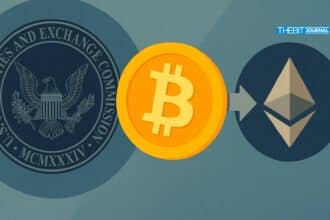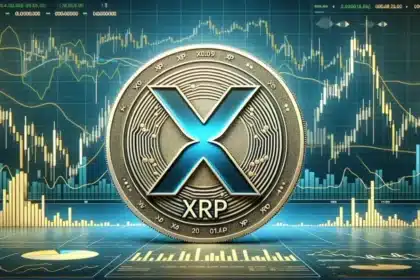Pi Coin (PI) recently shocked the crypto market with an impressive 60% rally, surging from $0.402 to $0.794 in a matter of hours. This sudden spike generated significant online buzz, reigniting short-term optimism. However, as quickly as the price soared, it pulled back to $0.64, raising doubts about whether the rally marked the beginning of a genuine reversal or was simply another speculative blip. As at the time of this publication, its current price stands at $0.55.
For those watching Pi Coin’s movement closely, the recent volatility seems familiar. The price fluctuations may appear as part of a larger pattern where low-cap tokens with limited utility and exchange access experience price swings driven by retail speculation rather than sustained interest from long-term holders. In the case of Pi Coin, the price surge was largely attributed to retail buying, a trend that has historically fueled short-term price movements for assets with little fundamental backing.
The Rally and Its Short-Term Drivers
Pi Coin’s price surge, while impressive, comes on the back of little real-world progress in terms of development or utility. At its peak of $0.794, the coin was still down more than 70% from its February highs of $2.98, highlighting the inherent volatility that has characterized Pi Coin’s trajectory. While a 60% increase in hours might seem like a significant recovery, it is important to note that such price actions often signal speculative interest rather than genuine accumulation by long-term investors.
This pattern isn’t new for Pi Coin. Based on available data, without strong foundational backing or access to major exchanges, the token remains vulnerable to sudden bursts of speculative buying followed by rapid sell-offs. As of now, the token’s market behavior is still largely driven by the psychology of short-term traders rather than any shifts in its core fundamentals.

Pi Coin’s Underlying Issues: Token Unlocks and Exchange Listings
Despite the recent price spike, the underlying challenges for Pi Coin remain significant. The project is facing an upcoming wave of token unlocks, with more than 1.55 billion PI tokens expected to enter circulation in the coming months. This influx of tokens into the market will likely exert downward pressure on the price unless a corresponding surge in demand occurs. However, with the current lack of substantial exchange listings, there is little reason to believe that demand will rise significantly.
Pi Coin’s absence from major exchanges like Binance, Coinbase, and Kraken continues to be a major limitation. Without access to these platforms, Pi remains reliant on smaller, mid-tier exchanges, limiting liquidity and restricting investor access. This lack of exposure on global exchanges makes it difficult for the token to gain institutional backing or broader market recognition, further dampening its long-term outlook.
Moreover, sources say the recent rally was not accompanied by any noticeable increase in trading volume, suggesting that the price movement was not backed by significant institutional or retail buying interest but rather by speculative traders looking for quick profits.
Technical Outlook: Resistance and Support Levels
On the technical front, Pi Coin continues to struggle with resistance. The recent bounce stalled just below the $0.693 level, a critical resistance that also aligns with the 50-period exponential moving average (EMA) at $0.675. The token remains capped by a descending trendline from March highs, and the Relative Strength Index (RSI) sits right at 50, indicating neutral momentum with no clear direction in sight.
Support levels are currently holding at $0.544, but should the price fall below this, it could test the $0.407 level, which represents last month’s lows. For a more sustained upward movement, Pi Coin would need to break above the $0.693 resistance with solid volume, but that remains a challenge without the backing of stronger fundamentals.
Is Volatility the New Normal for Pi Coin?
This 60% surge followed by a retracement exemplifies the speculative nature of the coin’s market behavior. While speculative interest may continue to drive short-term price spikes, Pi Coin faces significant hurdles in the form of upcoming token unlocks, lack of exchange listings, and an absence of strong use cases or long-term market adoption.

Until these issues are addressed, Pi Coin is likely to continue experiencing high levels of volatility. Investors should remain cautious, especially in light of the token’s current resistance and technical outlook. While Pi Coin’s future could hold promise, its trajectory will depend heavily on whether it can overcome these challenges and transform speculative interest into sustained demand.
Conclusion: Volatility and Speculation Will Define Pi Coin’s Path
In the end, Pi Coin’s latest rally was more of a speculative pop than a sign of meaningful long-term recovery. The token’s volatility, paired with its weak fundamentals, suggests that any future price movements may follow a similar pattern of sharp surges and equally rapid pullbacks.
For investors, the key question is whether the project will evolve into something more substantial or remain defined by speculative interest.
Follow us on Twitter and LinkedIn, and join our Telegram channel.
FAQs
Why did Pi Coin surge 60%?
Pi Coin’s 60% surge was driven by speculative retail buying rather than a shift in fundamentals or real-world adoption. Such spikes are typical for low-cap tokens with limited utility.
What is Pi Coin’s current price?
As of now, Pi Coin’s price sits at $0.64, down significantly from its February peak of $2.98.
What are the challenges Pi Coin faces?
Pi Coin faces several challenges, including upcoming token unlocks, lack of major exchange listings, and a reliance on speculative buying rather than strong fundamentals.
What is the technical outlook for Pi Coin?
Pi Coin’s technical outlook shows resistance at $0.693 and support at $0.544. The token remains in a consolidation phase, with no clear breakout direction unless key resistance levels are breached.
Glossary
Pi Coin (PI): A cryptocurrency associated with the Pi Network, a mobile-first blockchain project with limited exchange access.
RSI (Relative Strength Index): A momentum oscillator that measures the speed and change of price movements used to identify overbought or oversold conditions.
Token Unlocks: The process of releasing previously locked tokens into circulation, which can increase supply and affect price.
EMA (Exponential Moving Average): A type of moving average that gives more weight to recent prices, commonly used to identify trends.
Speculative Trading: Buying or selling assets based on price movements and potential short-term profits rather than long-term value or fundamentals.
References
Legal Disclaimer
This article is for informational purposes only and does not constitute investment advice. Cryptocurrencies are volatile and carry a high level of risk. Please conduct thorough research and consider consulting a financial advisor before making any investment decisions.




























